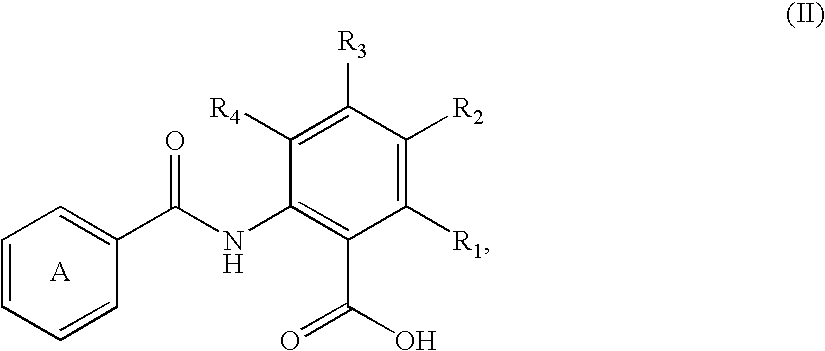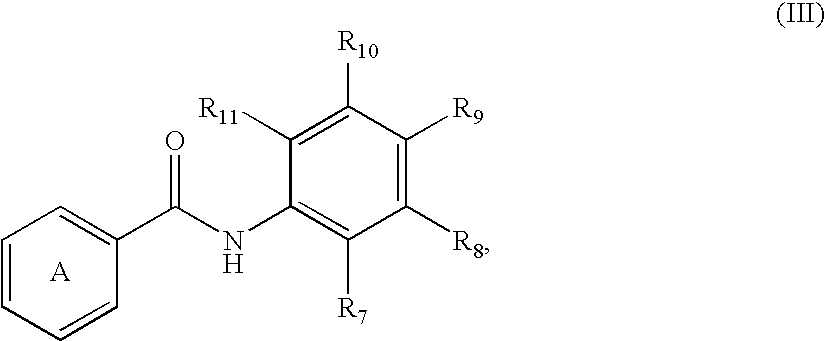Fatty acids can be saturated or unsaturated and substituted or unsubstituted, but are typically unsubstituted.
AD is a chronic, incurable, and unstoppable CNS disorder that occurs gradually, resulting in memory loss, unusual behavior, personality changes, and a decline in thinking abilities.
Eventually people with AD lose all reasoning abilities and become dependent on other people for their everyday care.
Finally, the
disease becomes so debilitating that patients are bedridden and typically develop coexisting illnesses.
PD is a chronic, incurable, and unstoppable CNS disorder that occurs gradually and results in uncontrolled body movements, rigidity, tremor, and
dyskinesia.
These
motor system problems are related to the death of brain cells in an area of the brain that produces
dopamine, a chemical that helps control
muscle activity.
Subsequent characteristic symptoms of PD are stiffness or slowness of movement, a
shuffling walk, stooped posture, and impaired balance.
These symptoms will begin to interfere with routine activities, such as holding a fork or reading a newspaper.
Finally, people with PD become so profoundly disabled that they are bedridden.
Those with ALS may have trouble walking, they may drop things, fall, slur their speech, and laugh or cry uncontrollably.
This
muscle weakness will become debilitating and a person will need a wheel chair or become unable to function out of
bed.
This degeneration causes uncontrolled movements, loss of intellectual faculties, and emotional disturbance.
As the
disease progresses, concentration on intellectual tasks becomes increasingly difficult and the patient may have difficulty feeding himself or herself and
swallowing.
DSPN causes few serious abnormalities and mostly results in numbness or tingling of the feet and slowed reflexes at the ankles.
Drug-induced, or toxic, neuropathies can be very painful.
Additionally, the use of such drugs can exacerbate otherwise minor neuropathies.
Mechanical pressure from staying in one position for too long, a tumor, intraneural hemorrhage, exposing the body to extreme conditions such as
radiation, cold temperatures, or toxic substances can also cause
peripheral neuropathy.
This results in disruption of normal electrical
conductivity within the axons, fatigue and disturbances of vision, strength, coordination, balance,
sensation, and bladder and
bowel function.
Such loss of
myelin surrounding nerve fibers results in short circuits in nerves traversing the brain and the
spinal cord that thereby result in symptoms of MS.
When an individual has a
peripheral neuropathy, nerves of the PNS have been damaged.
Depending on the cause of damage, the nerve
cell axon, its protective
myelin sheath, or both may be injured or destroyed.
Indeed, it is the risk of neuropathy that limits the
dose of
vincristine that can be administered.
After a while, the absence of LANP function appears to cause
nerve cells to malfunction.
By way of example, the trauma or injury may cause a degree of bleeding that significantly reduces the total volume of blood in the subject's body.
Under conditions where
DNA damage is excessive (such as by acute excessive
exposure to a
pathological insult), PARP is over-activated, resulting in cell-based energetic failure characterized by NAD depletion and leading to ATP consumption, cellular
necrosis, tissue injury, and
organ damage / failure.
Further, the formation of blood clots does not only limit bleeding in case of an injury (
hemostasis), but may lead to serious
organ damage and death in the context of atherosclerotic diseases by
occlusion of an important
artery or
vein.
A subject in need of such a treatment may be a subject who is obese, likely to become obese,
overweight, or likely to become
overweight.
Osteoporosis causes bones to gradually grow thin, fragile, and more likely to break.
This can be uncomfortable for women who already have hot flashes due to
menopause.
In addition, spinal surgeries in particular, or any
surgery in which the patient is prone for an extended period of time can lead to increased interocular pressure.
The inadequate
oxygenation causes capillary obliteration or nonperfusion, arteriolar-venular shunts, sluggish
blood flow and an impaired ability of RBCs to release
oxygen.
Photoxic damage also causes the accumulation of
lipofuscin in RPE cells.
The
intracellular lipofuscin and accumulation of
drusen in Bruch's membrane interferes with the transport of
oxygen and nutrients to the
retinal tissues, and ultimately leads to RPE and photoreceptor dysfunction.
More frequent administration or higher doses may precipitate a systemic
cholinergic crisis.
Patients typically lose
motor control and are confined to wheel chairs, and are commonly afflicted with
heart failure and diabetes.
The presence of these repeats results in reduced transcription and expression of the gene.
When cellular
frataxin content is subnormal, excess iron accumulates in mitochondria, promoting
oxidative damage and consequent mitochondrial degeneration and dysfunction.
In addition, patients with mitochondrial cytopathies, e.g. MELAS, often have recurrent migraines.
In the case of mitochondrial dysfunction (due to either mitochondrial
DNA defects or any of the acquired or conditional deficits like exicitoxic or
nitric oxide-mediated mitochondrial dysfunction) or other conditions resulting in impaired
pyrimidine synthesis, cell proliferation and axonal extension is impaired at crucial stages in development of neuronal interconnections and circuits, resulting in delayed or arrested development of neuropyschological functions like language, motor, social, executive function, and cognitive skills.
Moreover, mitochondrial
respiratory function altogether is depressed as a consequence of aging, further amplifying the deleterious sequelae of additional molecular lesions affecting
respiratory chain function.
Deficiencies in antioxidants or
antioxidant enzymes can result in or exacerbate mitochondrial degeneration.
The net result is that once a
mutation in a gene for a
mitochondrial protein that reduces
oxidative damage to mitochondria occurs, such defective mitochondria will rapidly populate the cell, diminishing or eliminating its respiratory capabilities.
This results in global mitochondrial dysfunction for a period after cytotoxic
chemotherapy.
Clinical use of
chemotherapy agents like
cisplatin, mitomycin, and cytoxan is often accompanied by debilitating “chemotherapy fatigue”, prolonged periods of
weakness and exercise intolerance which may persist even after
recovery from hematologic and gastrointestinal toxicities of such agents.
Since cells cannot directly detect and respond to defects in mitochondrial DNA, but can only detect secondary effects that affect the
cytoplasm, like impaired
respiration,
redox status, or deficits in
pyrimidine synthesis, such products of mitochondrial function participate as a
signal for
oocyte selection and follicular
atresia, ultimately triggering
menopause when maintenance of mitochondrial genomic fidelity and
functional activity can no longer be guaranteed.
Women with mitochondrial cytopathies affecting the gonads often undergo premature
menopause or display primary
cycling abnormalities: Cytotoxic
cancer chemotherapy often induces premature menopause, with a consequent
increased risk of
osteoporosis.
Mitochondria are major sites of
calcium sequestration, and preferentially utilize energy from the
respiratory chain for taking up
calcium rather than for ATP synthesis, which results in a downward spiral of mitochondrial failure, since
calcium uptake into mitochondria results in diminished capabilities for energy transduction.
Activation of glutamate receptors, especially of the subtype designated NMDA receptors, results in mitochondrial dysfunction, in part through elevation of
intracellular calcium during excitotoxic stimulation.
However, acute and intense anaerobic use of skeletal muscles often results in impaired athletic performance, with losses in force and
work output, and increased onset of
muscle fatigue, soreness, and dysfunction.
These metabolic processes are also accompanied by free radical generation which further damages muscle cells.
Use of
yeast having an extended lifespan can result in using less
yeast or in having the yeast be active for longer periods of time.
However, PPAA reduces binding of serum complement to complexes in which it is incorporated, thus functioning as a shielding
moiety.
Additionally, the tablets rapidly disentegrate in water.
Poorly soluble pharmaceutical materials can be used in the form of nanoparticles, which are nanometer-sized particles.
 Login to View More
Login to View More 


